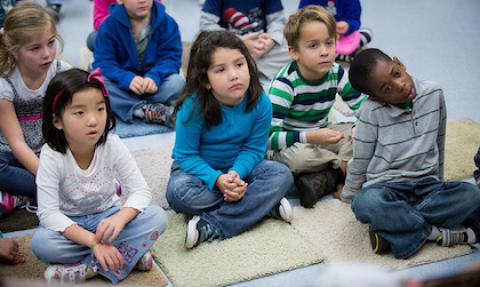Since its birth, the US has always defined itself as a egalitarian meritocracy, fundamentally distinct from the class-ridden societies of Europe.And at times, this has even been true. On the eve of the American Revolution, the income distribution of American colonists was far more equal than those of the mother country. “Indeed, New England and the Middle Colonies appear to have been more egalitarian than anywhere else in the measurable world,” wrote economic historians in a 2012 paper.
(To be clear, it’s difficult to consider a slave-holding society egalitarian at all. It was brutally unequal. But from an income distribution perspective, American colonists—meaning white men—were better off than their counterparts in Europe.)
Plenty has changed since then. The US became increasingly unequal in decades ahead of the Civil War in the 1860s. But at the dawn of the the 20th century it remained more egalitarian than European nations like Britain and France. Inequality rose sharply during the Jazz Age, and collapsed in the Great Depression, staying pretty much stable until the early 1980s. Since then American inequality has climbed sharply—so much so that the US is now a more unequal society than Europe was during the last days of aristocracy ahead of World War I, according to French economist Thomas Piketty in his massive study of the topic, Capital in the Twenty-First Century.
Not only is the US now less equal than Europe, it’s less mobile than many European countries. In the late 19th and early 20th centuries, Americans had a much easier time rising above the station into which they were born than their counterparts in Britain, according to economic historian Joseph Ferrie. Now, a poor Moroccan kid in France is much more likely to move into the middle class than a child born into a poor family in Mississippi. (The US and Britain are usually seen as having the lowest intergenerational social mobility of the countries of Europe and North America. That means our ultimate earnings are now heavily correlated with those of our parents. Here’s another study on the topic.)
Few would argue that this is a healthy development. And almost all would agree that if a change is going to be made, it must be driven in part by the American education system. But here’s the catch: the American education system is itself only an offshoot of an increasingly class-driven society.
Since the 1950s, American society has increasingly been segregated by socioeconomic status, with the proportion of the country living in middle-income territory steadily shrinking since 1970. The effects clearly have spilled over into schools.
“Relative to 40 years ago, high-income kids are more likely to be surrounded by other high-income kids, low-income kids by other low-income kids,” Greg Duncan, an academic who has studied the interaction of income segregation and equality, said in a speech earlier this year.
Such socioeconomic sorting causes all sorts of problems. Some are related to the schools themselves—so-called school effects—with those catering to poorer kids offering lower-quality, poorly financed education options. But other issues stem from the low-income monoculture of schools segregated by class. Since children of low-income parents typically are less prepared for high school and get less guidance on strategies for advancement toward college, low-income kids can benefit immensely from going to school with with kids whose parents are college-educated and know the ropes a bit better. Both are important. “But peer influences were far stronger than school effects,” said Gregory Palardy, who has studied the impact of socioeconomic segregation on high school achievement.
Perhaps most perniciously, the effects of socioeconomic and racial segregation linger even for those students who do manage to make it to college. These strivers graduate at far lower rates than their counterparts from more affluent families.
Why? A number of universities and researchers are coming to the conclusion that a big part of the reason so many students fail to finish is that they feel that they don’t belong.
That’s not only a shame, it’s another indication of the socioeconomic gulf that keeps Americans from different class backgrounds living in what are effectively different countries.
“I think the danger is that an unequal society can become a stratified society, and that inequality can begin to perpetuate itself almost automatically,” said Richard Reeves, policy director of the Center on Children and Families.
If the US education system is any indication, that process is well underway.
[Matt Phillips is a reporter for Quartz, covering finance, markets and economics.]


Spread the word